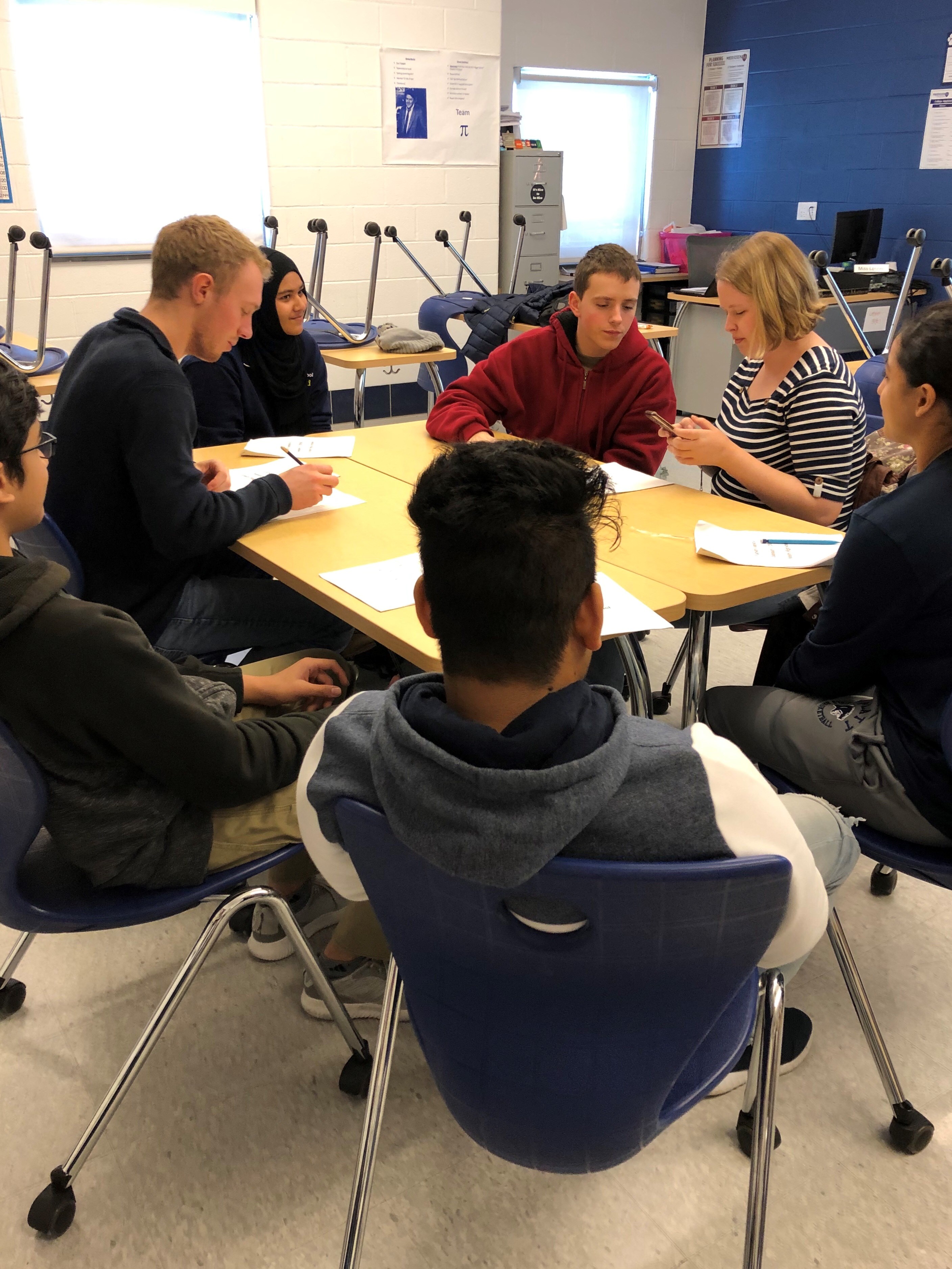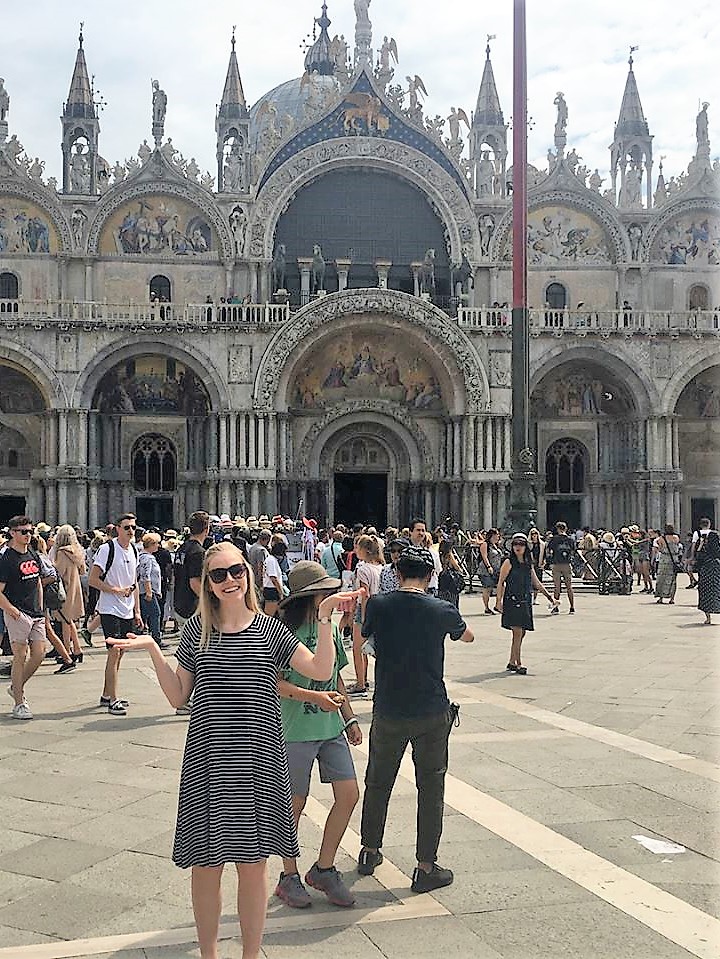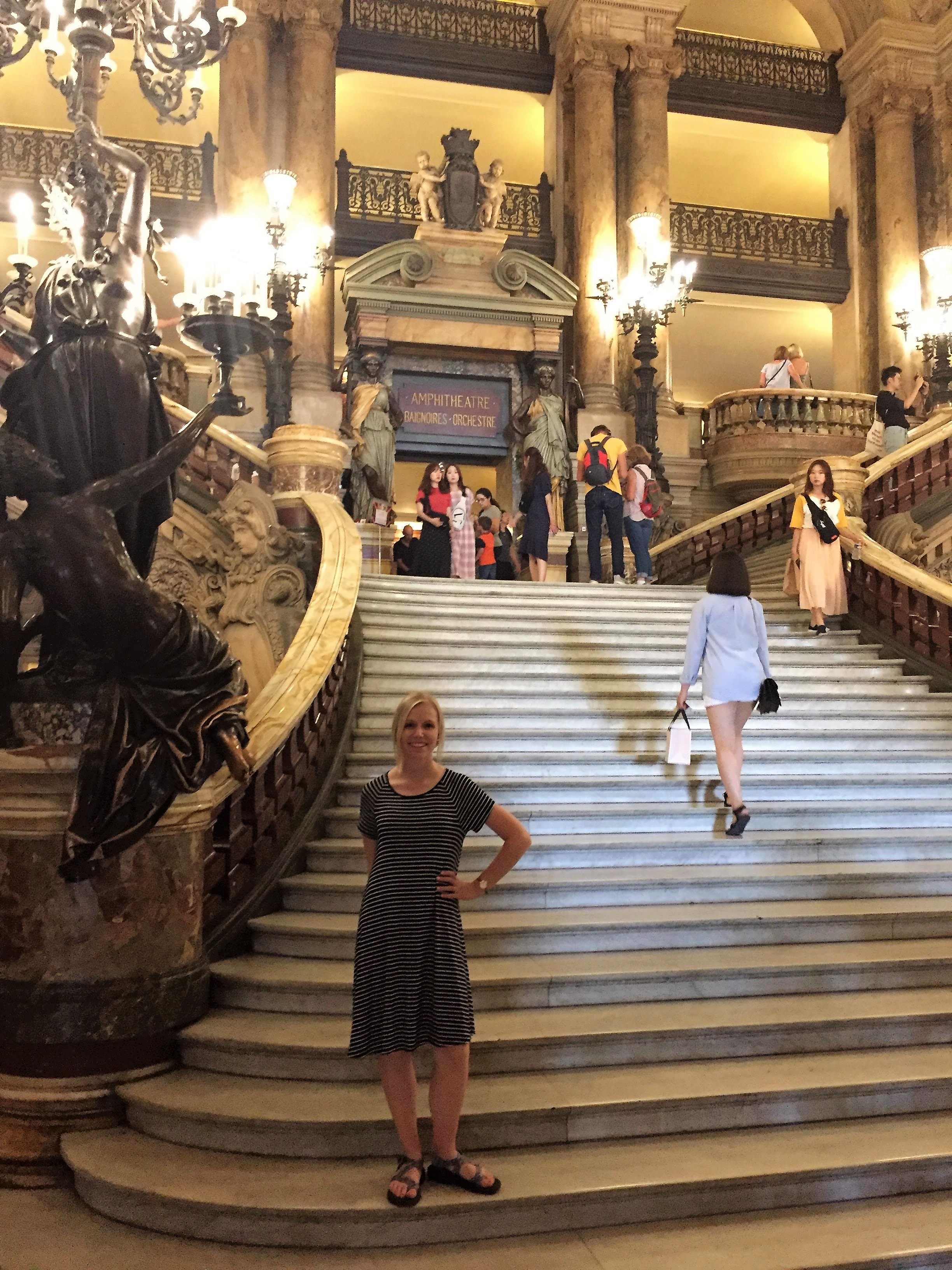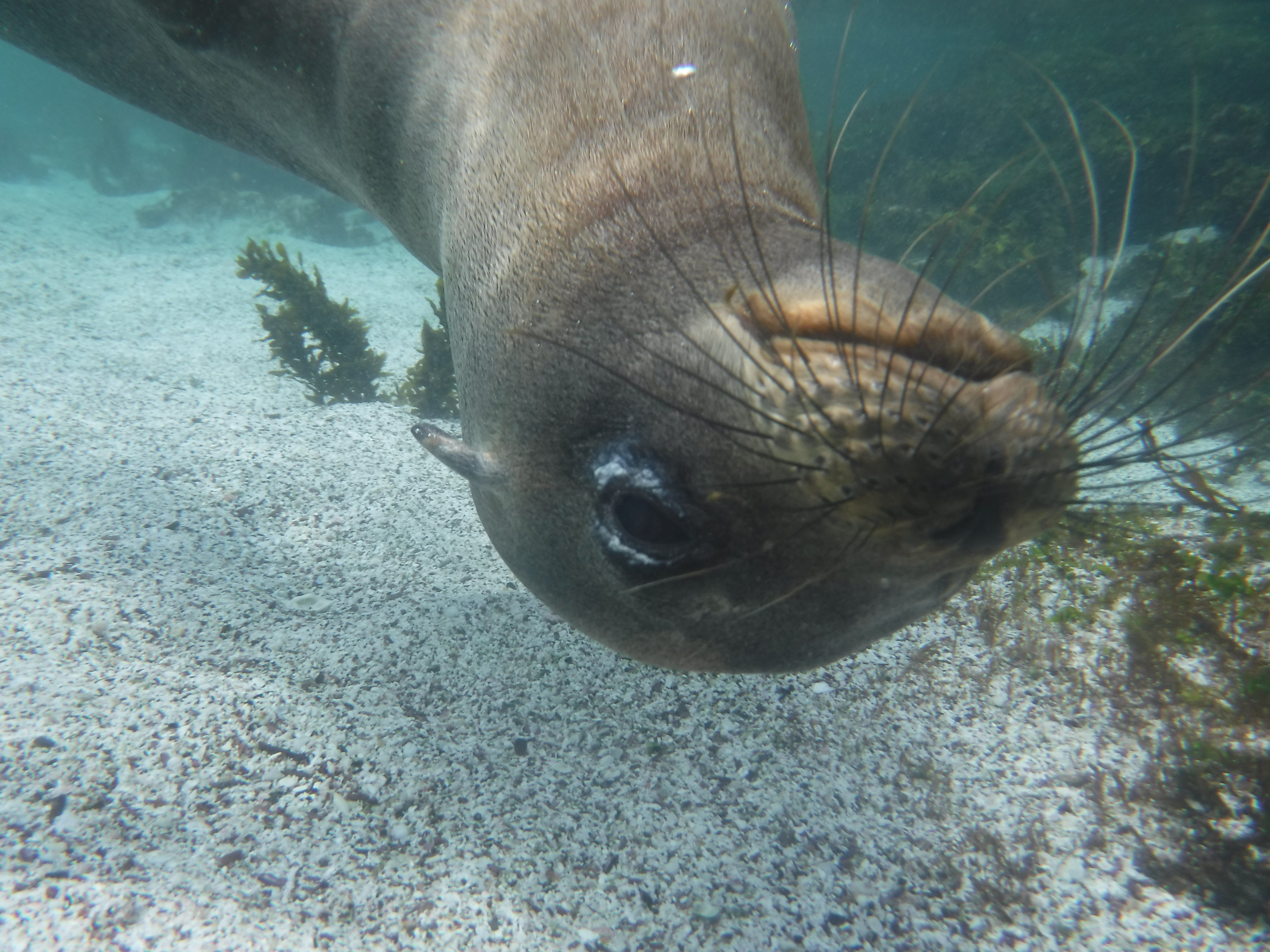 If you see an inordinate amount of people wearing blue or a puzzle piece lapel pin today, here’s why. Today is the 12th annual World Autism Awareness Day (#WWAD), established by Member States of the United Nations to raise awareness about people with Autism Spectrum Disorder (ASD) throughout the world. To show our support, Fund for Teachers proudly shares the work of Guin Geyer.
If you see an inordinate amount of people wearing blue or a puzzle piece lapel pin today, here’s why. Today is the 12th annual World Autism Awareness Day (#WWAD), established by Member States of the United Nations to raise awareness about people with Autism Spectrum Disorder (ASD) throughout the world. To show our support, Fund for Teachers proudly shares the work of Guin Geyer.
Autism was a relatively new diagnosis when Guin earned her special education degree, which meant she received little to no training on how to help students and their families living with the communication disorder. While the diagnosis continues to increase (1 in 59 children according to the Centers for Disease Control and Prevention), Guin found teacher development in the field remained non-existent. Not one teacher in her school district was trained on the spectrum.
“I intend to become the go-to professional in the state of Oklahoma to help colleagues find the best teaching methods for severe-profound student populations they teach,” wrote Guin in her Fund for Teachers proposal.

The Picture Exchange System facilitates communication through images
She started this quest with a $5,000 grant to attend the Treatment and Education of Autistic and related Communication Handicapped Children (TEACCH) conference in Indianapolis last summer. Considered the best practice for teaching those with autism disorders, TEACCH representatives taught Guin how to structure her classroom in ways that help students better understand their environment and achieve independence over time. She then returned home to Oklahoma City and created that classroom at Bridgestone Elementary.
“With extra funds from my Fund for Teachers grant, as well as some personal fundraising, I was able to set up a model classroom,” said Guin. “I submitted another grant to set up all areas of the school with a Picture Exchange System so that our non-vocal students have a way to communicate everywhere in the building.” In addition:

The new bubble tower employs sound, lights and movement to calm students’ anxiety.
- Students now have schedules that match their specific level and needs.
- Every student is now included with regular education peers in one aspect or another on a daily basis.
- She’s conducted several teacher professional development sessions across Oklahoma.
- The Facebook page she created for Oklahoma educators reaches more than 1,200 people, supporting collaboration and reducing burnout.
As a result of these innovations, Guin reports a 98% reduction in disruptive classroom behaviors. “Very rarely do we see any problems at all and it’s easy for us to resolve them at this point,” she says.
“By funding training for me, you changed the lives of multitudes of students with special needs,” said Guin. “You have given me the tools to help them be more successful in the general education environment and to be more included in society as a whole.”
[minti_divider style=”3″ icon=”” margin=”20px 0px 20px 0px”]
 Emily Frake (Camino Nuevo Charter Academy #2 – Los Angeles) also chose to pursue learning that supports students on the Autism spectrum. Emily used her Fund for Teachers grant to attend The Autism Show, in Manchester, UK, and, afterwards, observed leading inclusion schools in London to better understand effective and meaningful implementation of inclusion on a school-wide level.
Emily Frake (Camino Nuevo Charter Academy #2 – Los Angeles) also chose to pursue learning that supports students on the Autism spectrum. Emily used her Fund for Teachers grant to attend The Autism Show, in Manchester, UK, and, afterwards, observed leading inclusion schools in London to better understand effective and meaningful implementation of inclusion on a school-wide level.
“My fellowship opened my eyes to a society that is more accepting and accessible for people with all sorts of disabilities,” she said. “With all the learning I’ve done, I’m hoping to help general educators know that teaching kids with disabilities is not scary or even as difficult as they think. I want them to feel empowered to take ownership of ALL students.”









 Tara (pictured at right on the Amsterdam leg of her fellowship) teaches
Tara (pictured at right on the Amsterdam leg of her fellowship) teaches  Anna Beer’s book
Anna Beer’s book 



 Heather is an elementary music teacher in northwest Oklahoma City for Putnam City Schools. She has spent all four years of her teaching career at Lake Park Elementary, and currently serves on her school’s leadership team as the Specials Team Leader. Heather enjoys helping her students explore culture and history through music. You can see more images from her fellowship on Instagram
Heather is an elementary music teacher in northwest Oklahoma City for Putnam City Schools. She has spent all four years of her teaching career at Lake Park Elementary, and currently serves on her school’s leadership team as the Specials Team Leader. Heather enjoys helping her students explore culture and history through music. You can see more images from her fellowship on Instagram 

 After my fellowship, I was able to give my personalized lessons and truly prepare them for their next step. I have created a social skills curriculum to teach my students tangible skills that will assist them in becoming more independent and prepare them for employment.
After my fellowship, I was able to give my personalized lessons and truly prepare them for their next step. I have created a social skills curriculum to teach my students tangible skills that will assist them in becoming more independent and prepare them for employment. 



 John arrived at the Globe Theatre’s “Teaching Shakespeare Through Performance” workshop as a 58-year-old literature teacher and completed his fellowship as Ophelia, Hamlet’s love interest. He explains:
John arrived at the Globe Theatre’s “Teaching Shakespeare Through Performance” workshop as a 58-year-old literature teacher and completed his fellowship as Ophelia, Hamlet’s love interest. He explains: Yeah, yeah, some of you took today off for President’s Day, but did you know that one of the men you’re celebrating is also recognized as
Yeah, yeah, some of you took today off for President’s Day, but did you know that one of the men you’re celebrating is also recognized as 







 To clarify the broad scope of the holiday, Liz suggested using the picture book New Clothes for New Year’s Day
To clarify the broad scope of the holiday, Liz suggested using the picture book New Clothes for New Year’s Day  As you may recall, our fellowship was to attend the
As you may recall, our fellowship was to attend the  The most exciting take away from the Model Schools Conference has been the connections we made while there. Those connections have helped us to continue our learning, which will continue to impact our students.
The most exciting take away from the Model Schools Conference has been the connections we made while there. Those connections have helped us to continue our learning, which will continue to impact our students. Students wielding knives at
Students wielding knives at  Traci worked alongside chefs at
Traci worked alongside chefs at 

 [minti_dropcap style=”normal”]T[/minti_dropcap]his week marked the 70th anniversary of the
[minti_dropcap style=”normal”]T[/minti_dropcap]his week marked the 70th anniversary of the 
 Brian Peck & Zach McCullough II
Brian Peck & Zach McCullough II






 For more than a decade, Tim has empowered his students to take ownership over their education and to become independent learners while focusing on character and integrity. Throughout his teaching career, he has coached athletics at both the middle and high school levels and views the competition field as an extension of the classroom where students can push themselves.
For more than a decade, Tim has empowered his students to take ownership over their education and to become independent learners while focusing on character and integrity. Throughout his teaching career, he has coached athletics at both the middle and high school levels and views the competition field as an extension of the classroom where students can push themselves. Shahara Benson (Russell Byers Charter School, Philadelphia, PA) explored the history of race relations in South Africa, closely connecting the events and leaders in the anti-Apartheid Movement with the Civil Rights Movement in America, to inform a compare/contrast study of present relationships and treatment of blacks and non-blacks in the US to South Africa.
Shahara Benson (Russell Byers Charter School, Philadelphia, PA) explored the history of race relations in South Africa, closely connecting the events and leaders in the anti-Apartheid Movement with the Civil Rights Movement in America, to inform a compare/contrast study of present relationships and treatment of blacks and non-blacks in the US to South Africa. “I now have so many resources and firsthand experiences to share with my students that will build context around our work towards social justice. I returned with armfuls of books, graphic novels, and primary sources that show how systems of oppression were constructed to marginalize people of color, including many for young audiences. Additionally, I was reminded to elevate the identities of students, and make them feel proud and inspired to be exactly who they are.”
“I now have so many resources and firsthand experiences to share with my students that will build context around our work towards social justice. I returned with armfuls of books, graphic novels, and primary sources that show how systems of oppression were constructed to marginalize people of color, including many for young audiences. Additionally, I was reminded to elevate the identities of students, and make them feel proud and inspired to be exactly who they are.”



 Back in the Bronx, Anne worked with guidance counselors to introduce vocational planning in ninth grade and sought out student internship opportunities with community mentors. Her math classes pivoted to provide project-based problem solving with relevant applications in fields such as construction, plumbing and graphic design.
Back in the Bronx, Anne worked with guidance counselors to introduce vocational planning in ninth grade and sought out student internship opportunities with community mentors. Her math classes pivoted to provide project-based problem solving with relevant applications in fields such as construction, plumbing and graphic design. “Greater real-world math applications through authentic learning opportunities now promote career readiness in my classes,” said Anne. “And, for the first time this year, students are participating in paid internships, for which they develop job descriptions and maintain time sheets. It’s been an extraordinary experience for them and a dream come true for me to see them ultimately head into the workforce.”
“Greater real-world math applications through authentic learning opportunities now promote career readiness in my classes,” said Anne. “And, for the first time this year, students are participating in paid internships, for which they develop job descriptions and maintain time sheets. It’s been an extraordinary experience for them and a dream come true for me to see them ultimately head into the workforce.”

 The mascot at RHAM High School is a Sachem, or tribal chief, in association with local tribes near Hebron, CT, and that’s about all the exposure Margaret Clifton’s students (95% white/0% Native American) had to this demographic’s history or culture. Their lack of awareness also hindered their interaction with Senior English texts, including
The mascot at RHAM High School is a Sachem, or tribal chief, in association with local tribes near Hebron, CT, and that’s about all the exposure Margaret Clifton’s students (95% white/0% Native American) had to this demographic’s history or culture. Their lack of awareness also hindered their interaction with Senior English texts, including 
 Most recently, that exposure took the form of self-directed research projects stemming from artifacts and resources Meg collected on her 10-day fellowship. Students sought out and presented topics from the perspective of indigenous people, including the fact that indigenous women are much more likely to go missing or be murdered without justice (represented in this screenshot of social media hashtags #MMIW for Missing and Murdered Indigenous Women) from one student’s presentation).
Most recently, that exposure took the form of self-directed research projects stemming from artifacts and resources Meg collected on her 10-day fellowship. Students sought out and presented topics from the perspective of indigenous people, including the fact that indigenous women are much more likely to go missing or be murdered without justice (represented in this screenshot of social media hashtags #MMIW for Missing and Murdered Indigenous Women) from one student’s presentation).

 Meg Clifton has taught at RHAM High School in Hebron, CT for the past 13 years. She teaches 10th and 12th grade English, as well as drama and journalism electives. She believes in the power of telling stories and listening to the stories of others. Outside of school, she sings, dances, and acts in community theater productions. Enjoy images from her fellowship on Instagram at
Meg Clifton has taught at RHAM High School in Hebron, CT for the past 13 years. She teaches 10th and 12th grade English, as well as drama and journalism electives. She believes in the power of telling stories and listening to the stories of others. Outside of school, she sings, dances, and acts in community theater productions. Enjoy images from her fellowship on Instagram at